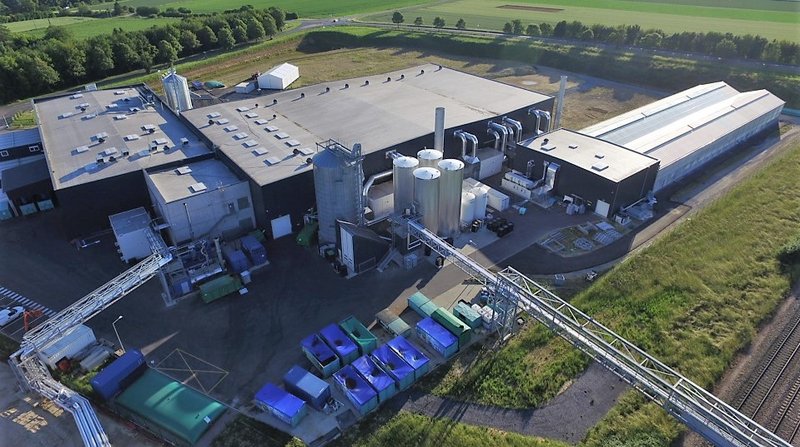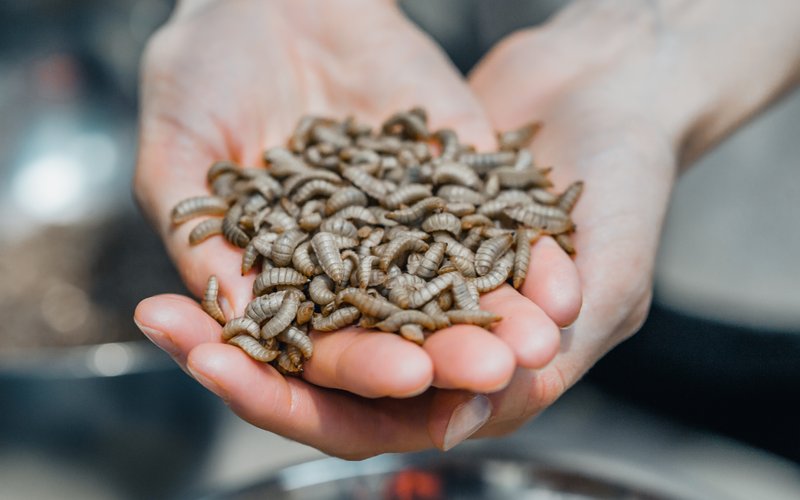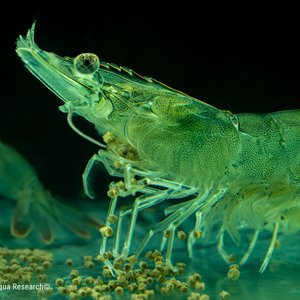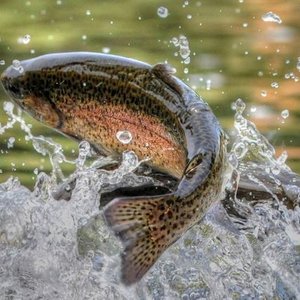Innovafeed recently opened the extension of its Nesle production site in northern France. It is the company’s first industrial-scale site and a demonstration of its industrial symbiosis model and technological know-how.
The first phase of this site, which started in 2020, is currently in production. The recently inaugurated site is the second phase intended to increase egg production capacity.
“We are in the process of finalizing the total expansion of our site – the largest insect production site in the world with a total surface of 55,000m2, including the floors, and 25,000m2 ground surface. This third phase will allow us to expand our breeding capacities. Eventually, this site will allow us to produce 100,000 tons of ingredients – including 15,000 tons of protein – and position us as a leader in the insect industry,” Alex Diana, product manager aquaculture at Innovafeed, told Aquafeed.com in a recent interview.
The extension has implemented production updates. “Optimizing energy consumption and sustainability were already addressed through the development of our circular model. This symbiosis model allows us to collect byproducts of our agro-industrial partner located nearby and upcycle them as feed ingredients for our insects,” Diana said. “Additionally, the model recovers unused energy, previously dispersed in the atmosphere, from another industrial partner to power the production sites directly.”
“This model avoids any consumption of fossil energy and reduces its carbon footprint by 80%, by avoiding, for example, the energy equivalent of 120 GWh per year, which represents the annual energy consumption of more than 10,000 French households,” Diana explained. “It protects us from increasing energy prices and even makes us more competitive.”
Innovafeed currently supplies a mix of wheat bran and wheat slurry from a starch manufacturer located just beside the production site and has established a long-term partnership that allows the company access to these sources in the future.
The extension moves Innovafeed to the next level in terms of technology and industrial model.

Innovafeed Nesle site. Credits: Innovafeed
Internationalization
Innovafeed partnered with ADM to build a new facility in the US. In January, the companies began laying the groundwork to implement Innovafeed’s circular model next to ADM's plant and headquarters in Decatur, Illinois.
The companies are building the North American Insect Innovation Center, which will open by the end of the year. “It will enable us to adapt and deepen our know-how in the face of environmental variables (new feedstock, new climatic conditions, etc.) and accelerate the deployment of our local ingredients production,” Diana stated.
Innovafeed has also started to market volumes in the USA in pet food, through the partnership with ADM, and directly in other market segments. “We are investing the necessary resources to secure the deployment of our local production and position ourselves as a leader in this geography which has immense potential,” Diana said.
Innovafeed’s international deployment plan is based on the availability of agricultural coproducts, mainly the corn belt in the United States and the wheat area in Europe but also Southeast Asia. “Farming insects in warmer regions does not necessarily mean cheaper products as in most cases it’s required to cool down the temperature to an average of 28-30°C and this can be more energy intensive than warming it up,” Diana said.
The markets for produced insect meals are evolving and expanding as the interest in alternative protein sources grows. While the specific markets may vary depending on the region and regulations, the aquafeed market remains the company’s primary market, particularly for salmonids and shrimp feed.
“Aquaculture companies and feed manufacturers are increasingly incorporating insect meal into their feed formulations to enhance the nutritional value and sustainability of their products. It’s also the market where we can have the biggest positive impact in the global food chain and where we see the biggest growth in the future,” Diana said.
But the company also sees pet food, livestock and poultry feeds, and organic fertilizers and soil amendments as important markets. “It's important to note that the market for insect meal is still relatively small when compared to traditional protein sources such as fishmeal and other vegetable proteins. However, with growing interest in sustainability, circular economy practices, and the need for alternative protein sources, the market for insect meal is expected to expand further in the coming years,” Diana said.
Other partnerships
Innovafeed partnered with Skretting and French retail group Auchan to introduce a trout raised on a novel feed enriched with algal oil and insect meal from InnovaFeed. “Innovafeed was involved in the first value chain that launched an ‘insect-fed’ trout back in 2018 and then renamed it in 2020 as 'sustainable trout' when all the feed ingredients had 0% impact on marine resources. Customers appreciated a return to the naturality in the feed, since insects are part of the natural diet of the trouts in the wild and, in general, they choose to buy a trout that was farmed responsibly,” Diana stated.
The company has also partnered with Cargill to bring innovative and sustainable solutions to the animal feed industry by using insect protein. Since its inception, the partnership has allowed the commercialization of insect protein for animal feed which is used in the production of fish feed for aquaculture and promoting sustainable agriculture. “Overall, the partnership between Cargill and Innovafeed has been successful in promoting sustainable agriculture and bringing innovative solutions to the animal feed industry,” said Diana.
Aquafeed trials
“Today, scientific research on insect protein in the aquaculture domain is somehow limited to key applications such as salmonids and it’s extremely diverse in the quality of insect meal that is used, often produced in a laboratory at an R&D scale and not representative of the insect meal that is produced at large scale by industrial players. This creates a lot of variability in the results,” Diana stated.
“It’s therefore important to perform R&D in collaboration with our partners as we consider it one of our key priorities for growth in the aqua market, allowing us to improve the functional feed ingredients that we develop taking into account the nutritional needs of the animals. These trials are designed to evaluate the performance of different feed and ingredient formulations on various fish and shrimp species, including growth rates, feed conversion ratios, digestibility, and overall health.”
Innovafeed has been involved in different research consortiums evaluating product performance at a large scale and across the value chain. An example, it’s the Millenial Salmon project which aims at creating a knowledge-based sustainable product that answers to modern Millennial principles of life, considering techno-economic, animal welfare, environmental and societal aspects as a whole.
“Overall, continuous trials and research are essential to improving the performance of our functional proteins for aquaculture and ensuring that we are providing the best products on the market,” Diana concluded.













